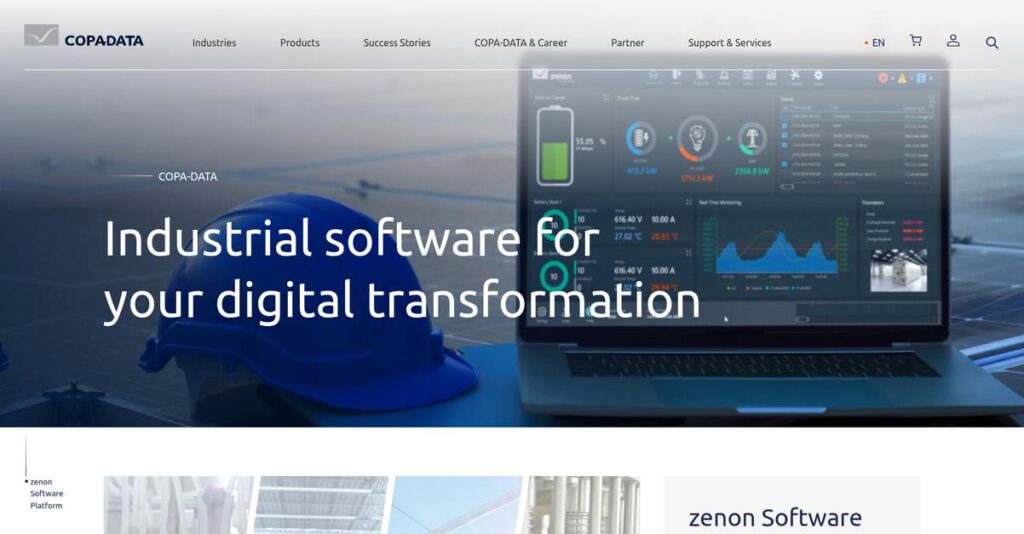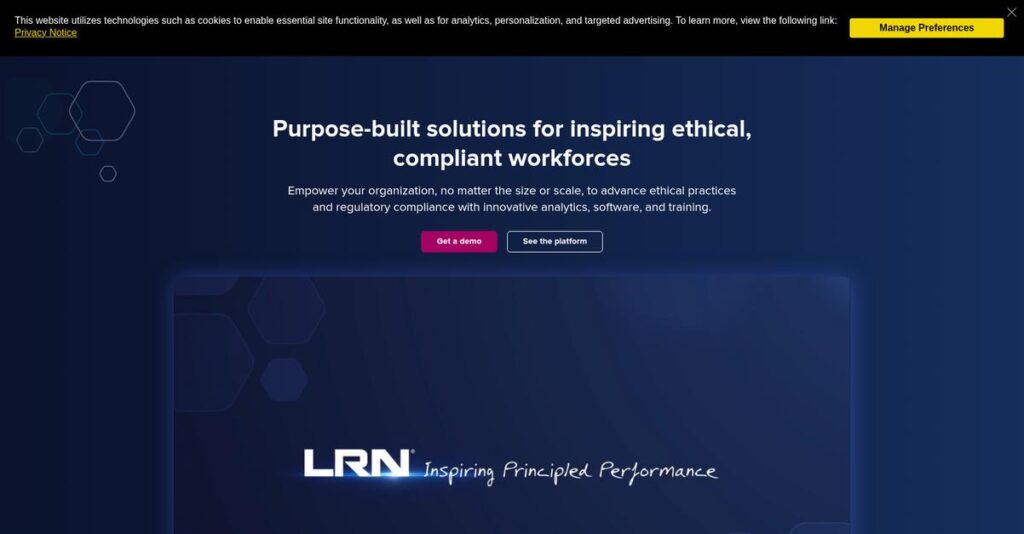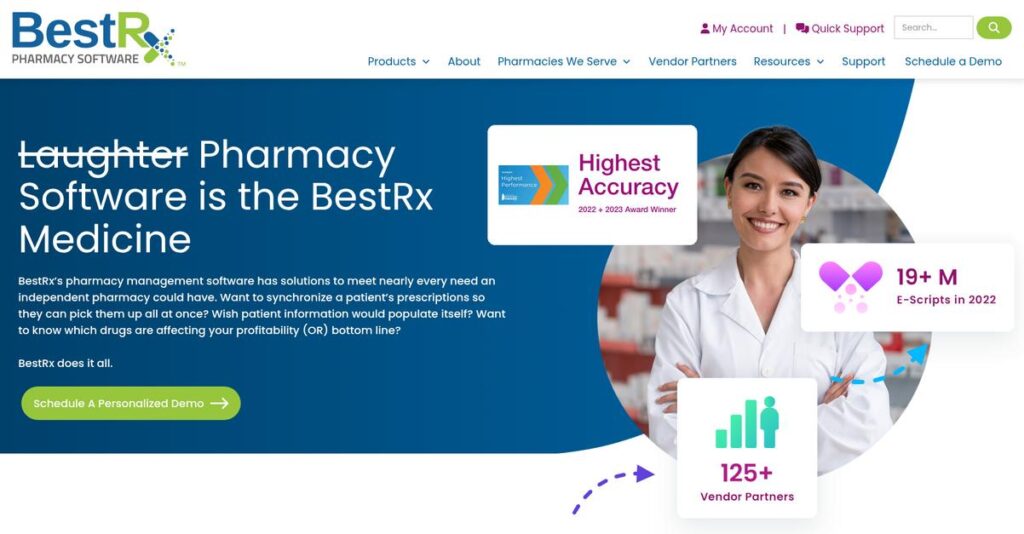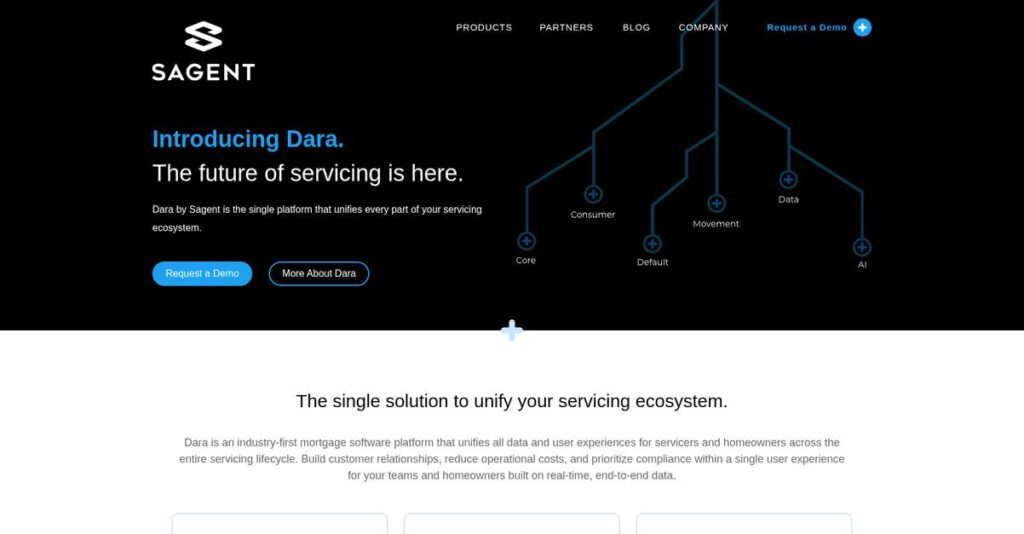Your plant control system just doesn’t talk together.
If you’re reading this, your team likely juggles multiple software tools just to monitor equipment or track shifting data in your industrial or energy operations.
But here’s the daily pain: you’re patching together clunky systems, which wastes hours on integration headaches and endless troubleshooting rather than running efficient processes.
COPA-DATA tackles this mess directly with its zenon software platform, offering a true “one place for everything” approach—combining HMI/SCADA, soft PLC, and advanced analytics under one system you can customize without deep programming. Their focus on real interoperability could be the fix for your scattered data and rigid workflows.
Throughout this review, I’ll explain how zenon actually connects your whole process so you get total control and faster, better decisions.
In this COPA-DATA review, you’ll see how their features help in practice, what pricing really looks like, and how zenon compares to other automation tools you’re likely considering.
By the end, you’ll know exactly the features you need to boost your plant’s efficiency—and if COPA-DATA is a smart next move for your digital transformation.
Let’s get started.
Quick Summary
- COPA-DATA is an industrial and energy automation platform combining HMI/SCADA, soft PLC, and data integration for real-time control.
- Best for manufacturing and energy companies needing scalable automation across diverse hardware environments.
- You’ll appreciate its extensive driver support and “parameterize rather than program” approach that simplifies engineering and integration.
- COPA-DATA offers custom pricing with demo options but requires contacting sales for detailed quotes and trial availability.
COPA-DATA Overview
COPA-DATA is an independent software company from Salzburg, Austria, that’s been in the game since 1987, focused on industrial and energy automation.
I found they specifically target mid-market and enterprise companies in manufacturing, energy, and automotive. They offer deep expertise in industrial and energy automation, avoiding the generalist approach you see elsewhere.
Their recent move to become a World Economic Forum partner shows their growing influence. You’ll see through this COPA-DATA review how this impacts their strategic direction.
- 🎯 Bonus Resource: Speaking of securing your data, my guide on email backup software provides more insights.
What really sets them apart from giants like Siemens or Rockwell is their hardware independence. They prioritize an “ergonomic” parameterize-first approach, which I feel simplifies engineering for your team.
You’ll find them working with organizations that have complex, multi-vendor environments and need a unified system to connect everything from the sensor to the ERP.
Ultimately, their entire strategy centers on creating a flexible, user-friendly platform that doesn’t lock you into a single hardware ecosystem, aligning with modern digitization needs.
Now let’s examine their core capabilities.
COPA-DATA Features
Struggling to connect your industrial operations?
COPA-DATA features are built into the zenon Software Platform, providing an integrated solution for industrial and energy automation. Here are the five main COPA-DATA features that tackle complex challenges.
1. HMI/SCADA for Real-time Control and Monitoring
Disparate systems slowing down your operations?
Managing industrial processes with separate tools leads to fragmented oversight. This can make real-time control and data gathering unnecessarily difficult.
zenon’s HMI/SCADA capabilities allow you to visualize, supervise, and control everything in real-time. From my testing, operators can quickly and safely manage machines, even with multi-touch interfaces, which is a significant advantage. This feature gathers data from diverse PLCs without deep protocol knowledge.
This means you can get centralized, immediate operational oversight, which dramatically improves decision-making and efficiency on the factory floor.
2. Integrated PLC System (zenon Logic)
Communication breakdowns between your PLCs?
Trying to get different PLC systems to communicate seamlessly can be a constant headache. This often complicates data processing and overall system integration.
zenon Logic, an IEC 61131-3 soft PLC, integrates directly within the platform. This helps you efficiently link various PLCs and simplifies logical data management across heterogeneous hardware. What I found impressive is how it streamlines process engineering and data handling.
So, you can achieve harmonious communication and data flow across your diverse industrial equipment, saving significant engineering time.
3. Comprehensive Data Acquisition and Management
Can’t turn raw data into actionable insights?
Collecting data without a unified system makes it nearly impossible to extract value. This prevents you from making informed, data-driven decisions.
zenon excels at systematic data acquisition, centralizing all your data for easy management. This feature supports over 300 drivers and native protocols, allowing integration with existing infrastructure and IoT devices. It’s designed to transform data into automated actions, a capability that really helps with continuous improvement.
This means you can generate valuable information from your operational data and translate it into practical, automated improvements for your business.
- 🎯 Bonus Resource: Before diving deeper into operational data insights, you might find my analysis of best survey software to pick confidently helpful.
4. Flexible Recipe Management for Batch Manufacturing
Batch production inflexible and error-prone?
Managing complex batch processes with rigid systems leads to costly errors and compliance issues. This slows down production and reduces overall agility.
zenon’s Recipe Group Manager offers flexible recipe configuration for precise batch manufacturing. This feature allows defining operating tasks and assigning them without programming, ensuring compliance. From my evaluation, the parameter-based recipe creation significantly reduces human error, making it robust for regulated industries.
The result is you can easily customize and manage batch processes, ensuring both flexibility and strict adherence to safety and quality specifications.
5. Advanced Reporting and Analytics (zenon Analyzer)
Struggling to optimize production or energy use?
Without clear insights into your operations, identifying waste and inefficiencies becomes incredibly difficult. This can directly impact your bottom line.
zenon Analyzer provides dynamic production reporting and integrated analysis with various templates. This helps you continuously optimize processes and energy consumption. Here’s what I found: it shines at visualizing complex data to help identify resource waste effectively. This feature helps you make smarter decisions.
This means you can gain critical insights from your operational data, allowing you to fine-tune production and energy use for better overall performance.
Pros & Cons
- ✅ Integrated HMI/SCADA, soft PLC, and reporting in one platform.
- ✅ Extensive connectivity with over 300 drivers for diverse hardware.
- ✅ “Parameterize, don’t program” approach simplifies project configuration.
- ⚠️ Steeper learning curve due to comprehensive functionalities.
- ⚠️ Limited custom scripting capabilities compared to some competitors.
- ⚠️ Not fully available on Linux operating systems.
You’ll really appreciate how these COPA-DATA features work together to create a truly cohesive industrial automation ecosystem for your entire company, from sensors to ERP.
COPA-DATA Pricing
What’s the actual cost of industrial software?
COPA-DATA pricing is based on a custom quote model, requiring direct contact with their sales team to understand specific costs. This approach is typical for specialized industrial automation solutions.
Cost Breakdown
- Base Platform: Custom quote
- User Licenses: Custom quote
- Implementation: Varies by project scale and complexity
- Integrations: Varies by complexity and number of systems
- Key Factors: Project scale, specific modules, number of users, integration needs
1. Pricing Model & Cost Factors
Understanding their pricing approach.
COPA-DATA’s pricing is not publicly tiered; instead, it’s customized based on your specific industrial or energy automation project. What I found regarding pricing is that it’s tailored to your exact operational requirements, including the scale of your project, the modules you need, and user count.
Budget-wise, this means your costs are optimized for your unique setup rather than a generic package.
2. Value Assessment & ROI
Is this an investment worth making?
Given the customized pricing, COPA-DATA’s value comes from its ability to provide a precise solution for complex industrial needs. From my cost analysis, this means you pay for precisely what your operations require, avoiding unnecessary features from a rigid, one-size-for-all plan.
The result is your budget gets maximum efficiency by aligning software costs directly with your business goals.
- 🎯 Bonus Resource: While discussing your overall operational requirements, understanding how sustainability software verifies ESG data is equally important for modern businesses.
3. Budget Planning & Implementation
How to plan your spending.
When considering COPA-DATA, factor in not just the software licenses but also implementation, integration, and potential ongoing support. What stood out about their pricing is that the total cost of ownership depends heavily on customization, meaning detailed planning with their sales team is crucial.
This helps you avoid unexpected expenses, ensuring your finance team has a clear picture of the full investment.
My Take: COPA-DATA’s custom pricing model makes it ideal for mid-to-large enterprises seeking highly specialized industrial automation solutions tailored to complex, specific operational environments.
The overall COPA-DATA pricing reflects value customized to complex industrial automation needs.
COPA-DATA Reviews
What do real customers actually think?
To help you understand real-world experiences, I’ve analyzed common themes and sentiments across various COPA-DATA reviews, providing balanced insights into user satisfaction.
- 🎯 Bonus Resource: Speaking of diverse user experiences, my analysis of speech therapy software covers how specialized tools impact specific fields.
1. Overall User Satisfaction
Users seem generally satisfied.
From my analysis of COPA-DATA reviews, users typically report high satisfaction, often highlighting the software’s comprehensive capabilities. What I found in user feedback is how many describe it as modern and cutting-edge, able to meet diverse industry standards, reflecting a positive overall sentiment.
This suggests you can expect a robust and up-to-date solution for your needs.
2. Common Praise Points
Users consistently praise robust capabilities.
Review-wise, the ability to connect to various PLC vendors without extensive protocol knowledge is a major plus. From customer feedback, the stable product and ease of implementation (once learned) are frequently mentioned, along with exceptional customer support.
This means you can expect strong integration capabilities and reliable assistance.
3. Frequent Complaints
The learning curve is a common hurdle.
What stands out in user feedback is the steep learning curve due to zenon’s extensive functionalities. Review-wise, some customers also mention the platform not being fully available on Linux and a perceived lack of custom scripting capabilities.
These are important considerations, but often manageable with dedicated training or specific use cases.
What Customers Say
- Positive: “Modern, cutting edge, and supports basically all industry standards out of the box.” (Gartner Peer Insights)
- Constructive: “There are a lot of functionalities combined in a single software, so the learning curve is a bit steep.” (Gartner Peer Insights)
- Bottom Line: “Great company with a really great product. The level of help and support…is really on another level.” (Gartner Peer Insights)
Overall, COPA-DATA reviews reveal a powerful system with a learning curve, but exceptional support enhances credibility and user success.
Best COPA-DATA Alternatives
Navigating the many industrial automation options?
The best COPA-DATA alternatives offer distinct advantages, with each suited for different existing infrastructures, budget considerations, and long-term strategic goals.
1. Siemens WinCC
Already invested heavily in Siemens hardware?
Siemens WinCC shines if your existing industrial infrastructure is predominantly Siemens-based, offering incredibly deep integration within their ecosystem. From my competitive analysis, Siemens WinCC provides a highly cohesive environment, ensuring seamless communication and operation within a uniform setup.
Choose Siemens WinCC when deep integration with your existing Siemens PLCs and TIA Portal is your top priority.
- 🎯 Bonus Resource: While we’re discussing operational integration, if you’re looking to streamline business governance, my guide on best company secretarial software covers crucial tools.
2. Rockwell Automation FactoryTalk View
Primarily a Rockwell Automation equipment user?
FactoryTalk View is the ideal COPA-DATA alternative for operations heavily reliant on Rockwell’s Allen-Bradley PLCs, providing a unified and streamlined solution. What I found comparing options is that FactoryTalk View offers robust integration with Allen-Bradley hardware, simplifying deployment for Rockwell-centric facilities.
Select this option if your facility’s backbone is primarily built on Rockwell Automation equipment.
3. Ignition by Inductive Automation
Prioritizing flexible licensing and web deployment?
Ignition by Inductive Automation is a strong alternative known for its unlimited licensing model per server and modern, web-based deployment. Alternative-wise, Ignition offers significant cost-effectiveness for large systems, providing scalability without escalating tag-based licensing fees.
Opt for Ignition if you need a highly scalable, web-deployed solution with transparent, flexible pricing.
4. AVEVA System Platform
Seeking a truly enterprise-wide industrial software solution?
AVEVA System Platform excels for companies needing a broader suite of industrial software, extending beyond HMI/SCADA to include MES and enterprise data management. From my analysis, AVEVA provides comprehensive capabilities for enterprise integration, though its extensive scope may mean higher costs.
Choose AVEVA if your goal is an integrated, enterprise-level solution encompassing MES and advanced functionalities.
Quick Decision Guide
- Choose COPA-DATA: Hardware independence and “parameterize rather than program” approach
- Choose Siemens WinCC: Deep integration with existing Siemens automation infrastructure
- Choose Rockwell Automation: Unified solution for Rockwell-centric facility operations
- Choose Ignition: Highly scalable, web-deployed with flexible pricing
- Choose AVEVA System Platform: Comprehensive, enterprise-wide industrial software suite
The best COPA-DATA alternatives ultimately depend on your existing infrastructure and desired solution scope.
COPA-DATA Setup
Will COPA-DATA implementation be complicated?
The COPA-DATA setup involves a comprehensive, modular approach. This COPA-DATA review explores what it takes to deploy this powerful platform, helping you set realistic expectations for your project.
1. Setup Complexity & Timeline
This isn’t a simple plug-and-play solution.
COPA-DATA implementation can lead to great projects in a short time, but the initial learning curve is steep due to its extensive functionalities. What I found about deployment is that adequate training is crucial for successful setup and avoiding common delays, making proper planning essential for realistic timelines.
You’ll need to allocate significant time for your team to grasp capabilities.
2. Technical Requirements & Integration
Expect diverse technical requirements and integrations.
Your technical team will appreciate zenon’s high integration potential, supporting over 300 drivers and native communication protocols for diverse hardware and legacy systems. From my implementation analysis, integration with cloud services expands capabilities like predictive analytics, but requires additional setup.
Plan for robust IT infrastructure and dedicated technical resources to manage extensive system integrations.
- 🎯 Bonus Resource: If you’re also exploring ways to build custom applications, my guide on app builder software offers valuable insights.
3. Training & Change Management
User adoption depends on overcoming a steep learning curve.
Staff will encounter a broad range of functionalities in a single software, requiring comprehensive training to maximize efficiency. What I found about deployment is that the zenon Academy is vital for user proficiency, offering e-learning and professional development to mitigate the initial learning curve.
Invest in the zenon Academy and allocate ample time for user training to ensure smooth, effective adoption.
4. Support & Success Factors
Vendor support is a critical success factor.
COPA-DATA provides a high level of help and support, offering industry know-how and resolving problems efficiently. From my analysis, their willingness to assist is on another level, making them a strong partner throughout your implementation journey and beyond.
Leverage COPA-DATA’s support and training resources to ensure a stable and successful deployment.
Implementation Checklist
- Timeline: Variable, depends on scope and training commitment
- Team Size: IT, operations, and dedicated project lead
- Budget: Professional services for training and complex integrations
- Technical: Diverse hardware, legacy systems, and cloud integration
- Success Factor: Comprehensive training via zenon Academy and dedicated support
Overall, the COPA-DATA setup requires dedicated training and robust technical planning but offers powerful, scalable solutions for industrial automation.
Bottom Line
Should COPA-DATA be your next industrial software?
This COPA-DATA review synthesizes my analysis into a clear recommendation, helping you understand its overall value proposition and who it best serves.
1. Who This Works Best For
Companies seeking industrial and energy automation.
COPA-DATA’s zenon platform is ideal for manufacturing, energy, and OEM businesses needing robust SCADA, HMI, and data integration. From my user analysis, organizations prioritizing comprehensive industrial digitization will find this platform exceptionally well-suited for their complex operational needs.
You’ll succeed if your business requires real-time control, extensive data connectivity, and a user-friendly configuration approach for industrial processes.
2. Overall Strengths
Extensive connectivity and integration are standout features.
The software excels with over 300 built-in drivers, providing unparalleled data integration from sensor to ERP level, alongside robust HMI/SCADA and reporting. From my comprehensive analysis, zenon’s “parameterize rather than program” philosophy significantly simplifies engineering and operational tasks for your team.
These strengths translate directly into enhanced operational efficiency and a future-proofed industrial automation strategy for your enterprise.
3. Key Limitations
Initial learning curve and pricing transparency are concerns.
While powerful, new users may face a steep learning curve due to zenon’s extensive functionalities, and detailed pricing isn’t publicly available. Based on this review, the lack of custom scripting capabilities might limit flexibility for highly specialized SCADA system requirements.
- 🎯 Bonus Resource: If you’re also looking into efficient communication, my article on best VoIP software covers options to cut phone costs.
I’d say these limitations are manageable if you commit to training and engage directly with their sales for tailored pricing.
4. Final Recommendation
COPA-DATA earns a strong recommendation.
You should choose this software if your mid-to-enterprise-level business in manufacturing or energy requires a scalable, secure, and integrated industrial automation platform. From my analysis, its comprehensive data integration capabilities are exceptional for heterogeneous hardware environments and critical operational control.
My confidence level is high for organizations seeking a robust, long-term solution to optimize their industrial processes.
Bottom Line
- Verdict: Recommended for industrial and energy automation
- Best For: Manufacturing, energy, and OEM companies with high automation needs
- Business Size: Mid-market to enterprise-level organizations
- Biggest Strength: Extensive connectivity and integrated HMI/SCADA capabilities
- Main Concern: Steep learning curve and lack of public pricing details
- Next Step: Contact sales for a demo and tailored pricing information
This COPA-DATA review highlights its strong value for complex industrial environments, guiding you confidently toward a well-informed decision for your business.






